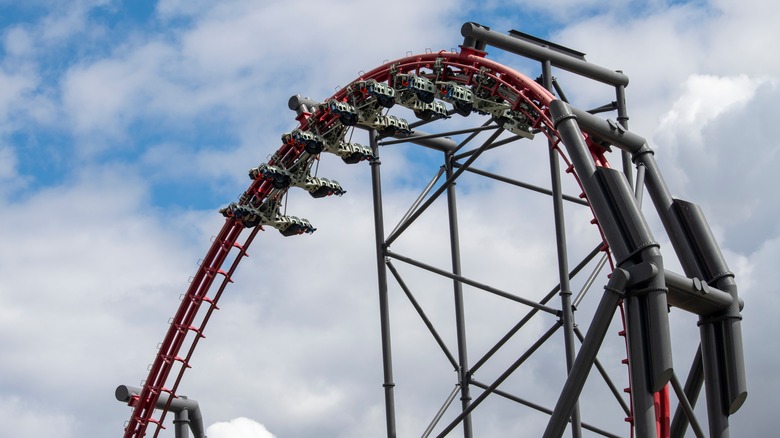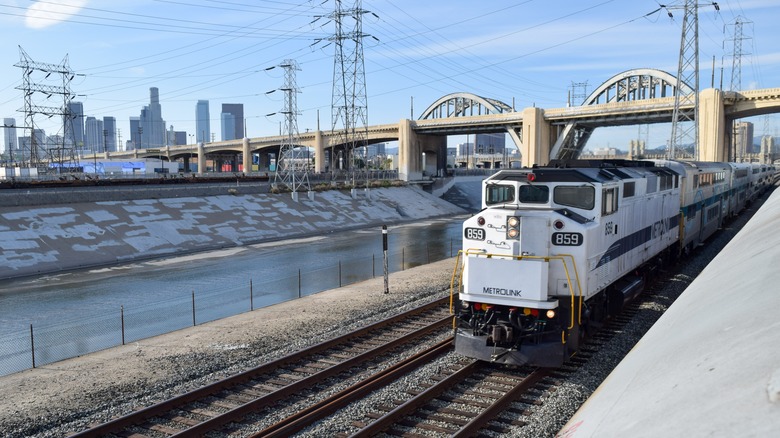Travel Guides Family Friendly Amusement Parks
Robert V Schwemmer/Shutterstock
Hilary I. Lebow
Three-dimensional rides are so yesterday. With huge strides in roller coaster technology over the last two decades, you can now board a 4D ride at a handful of theme parks around the globe. The first 4D roller coaster ever built was X at Six Flags Magic Mountain in Valencia, California in 2002. Today, the popular thrill ride is known as X2.
As for the 4D designation, that comes from seats that rotate 360 degrees on an axis independent from the track. The effect is that it leaves you spinning forward and backwards at the mercy of the coaster’s many twists and turns. This design element sets it apart from traditional rides with immovable seats that take you up and down in congruence with the track. This ground-breaking prototype was brought to life by manufacturer Arrow Dynamics — its last monument before the company went bankrupt due to high installation costs. In 2008, S&S Worldwide transformed the original X ride into the X2 with a new paint job, onboard audio, fog effects, and — what else? — flamethrowers. In a word, it’s intense.
How to find Six Flags Magic Mountain

Robert V Schwemmer/Shutterstock
The X2 is not for the faint of heart. It kicks off going backwards towards the lift hill, keeping riders in suspense as it climbs 200 feet into the air. At the top, you’ll have a brief pause to enjoy a panoramic view of the park, but it’s short. By the next breath, you’ll spin forwards (like a front flip) straight into a free fall. From there, the coaster loops and corkscrews at 76 miles per hour while you swivel in every possible direction — a true 4D experience.
From the entrance of the park, the X2 is located on the left just before the Viper. To beat the crowds, try to get there as early as possible, as it’s one of the most popular thrill rides in the world, says the theme park. The doors open at 10:30 a.m. on most days, though you’ll want to check the park calendar to be sure. You must be at least four feet tall to ride the X2. For obvious reasons, there are no loose items allowed like hats, cameras, or keys. Feel free to leave your personal items in a locker near the front of the ride. Tickets start at $65 for a day pass.
How to get to Six Flags

theframed.rabbit/Shutterstock
The closest major airport to Six Flags Magic Mountain is Los Angeles International Airport (LAX). The theme park is located just north of Los Angeles in the Santa Clarita Valley. If you rent a car, it’s a 45-minute drive on Interstate 5 from downtown L.A. to Valencia without traffic, but plan for longer commute times during rush hour.
If you’d prefer to take a train, the Metrolink has a one-hour route from LA Union Station to the Newhall Station in Valencia. The Antelope Valley Line operates Monday through Friday from 6 a.m. to 10 p.m., with a slightly later start on the weekends. Once you’re in Valencia, take the Route 4 & 14 bus to the McBean Regional Transit Center, then Route 3 & 7 to the theme park. If you’d rather take a bus from L.A., hop on the NoHo Express Route 757 from North Hollywood to the McBean Regional Transit Center. From there, it’s a straight shot on Route 3 & 7.

